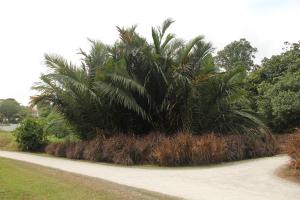Common Gardening Myths Exposed
From growing potted plants to cultivating a backyard flowerbed, gardening is an enjoyable way to get in touch with nature. However, for beginners, you might encounter gardening “superstitions” circulating online and within the gardening community, and follow unsound advice that could hurt rather than help your plants. So what’s right and what’s not? We suss out some gardening myths you’d do best to avoid:

Myth: Do not water your plants at noon, as the leaves may get sunburn
Fact: The midday sun can be strong, and it sounds entirely likely that water droplets on plant leaves can act as “magnifying glasses”, focusing sunlight on the plant and burn it.
In reality, however, water droplets are usually too close to the leaf surface to cause any damage before they evaporate. Plants with hairy leaves could be affected though ‒ the hairs may keep water droplets far away enough to focus sunlight on the leaves, if the water doesn’t roll off the leaf surface. Still, it is a good idea to water plants in the morning when the sun is not so strong, so that the plants can take in the water before it evaporates from the ground.
Myth: Put a base of fertiliser into holes before planting
Fact: That base of fertiliser can curb root growth, as the plant's roots would no longer spread beyond the hole to search for more nutrient-rich soil. This results in a weak root system. The best way to promote root expansion is to scatter the fertiliser around the topsoil after planting.

Myth: Wilting is a sign that a plant needs watering
Fact: Check the roots and whether the soil is already wet. The real reason for the wilting could be rotting or damaged roots, which would not be able to absorb enough water. Roots may rot due to overwatering or certain plant diseases, and further watering could worsen the problem. If the root rot is not too severe, you can prune away the affected parts and repot the plant in slightly moist soil.
After being transplanted, plants tend to show wilting as their roots may be damaged. If this is the case, avoid watering them more than the usual. Instead, keep them covered or in the shade for a few days as this reduces water loss from the leaves in the hot sun.
Myth: Adding gravel or other coarse material at the bottom of containers improves water drainage
Fact: This practice is actually counterproductive, as water tends to get trapped in the soil above the coarse material. This means the roots are steeped in soggy soil, which inhibits the plant’s growth. As such, a container with drainage holes at the bottom is sufficient for water to drain freely; this would also allow the roots to air. Ideally, you should take care not to overwater your plants.
Myth: Organic pesticides and herbicides are always better than synthetic
Fact: Many people assume that just because a pesticide or herbicide is made of natural ingredients, it’s safe to use for pest and weed control – and can even be applied liberally. In reality, so-called “organic” products can contain chemicals or other ingredients that are poisonous to people and the environment, just like synthetic ones. Both types can also harm plants and the eco-system if misused, or overused.
For instance, organic pesticides like pyrethrum contain a chrysanthemum extract that often kills beneficial bugs along with the harmful ones. As for natural herbicides, a solution with 20 per cent vinegar may kill off the tops of weeds but fail to eliminate their roots. It may also harm the plants that you were seeking to protect, by altering the natural pH of the soil. Using your fingers to pull out weeds may still be the safest – and most effective – way to get rid of those pesky plants.

Text by Grace Ng





Have views or comments on this article? Let us know via this form. If you would like to give us feedback on any other areas relating to our parks and gardens, please submit via https://www.nparks.gov.sg/feedback